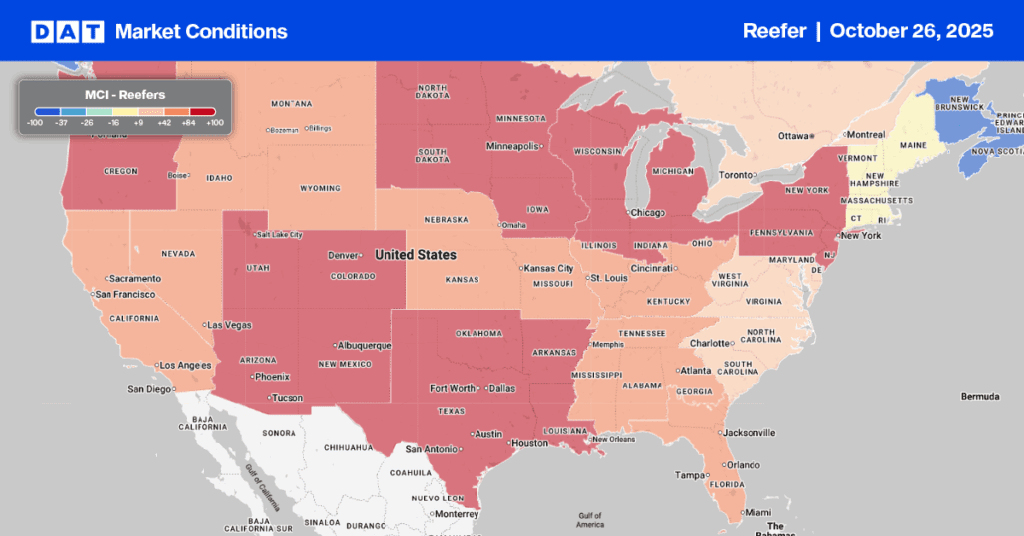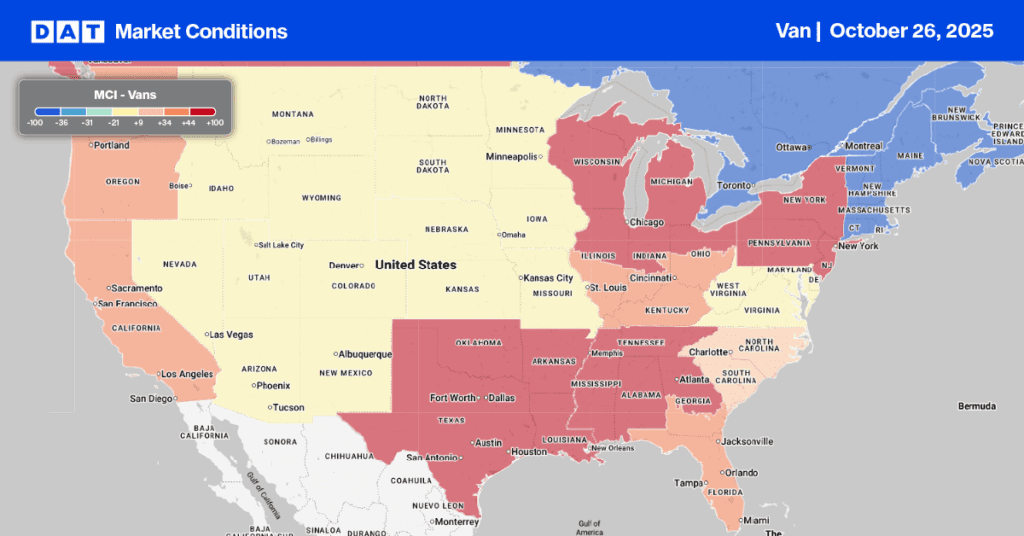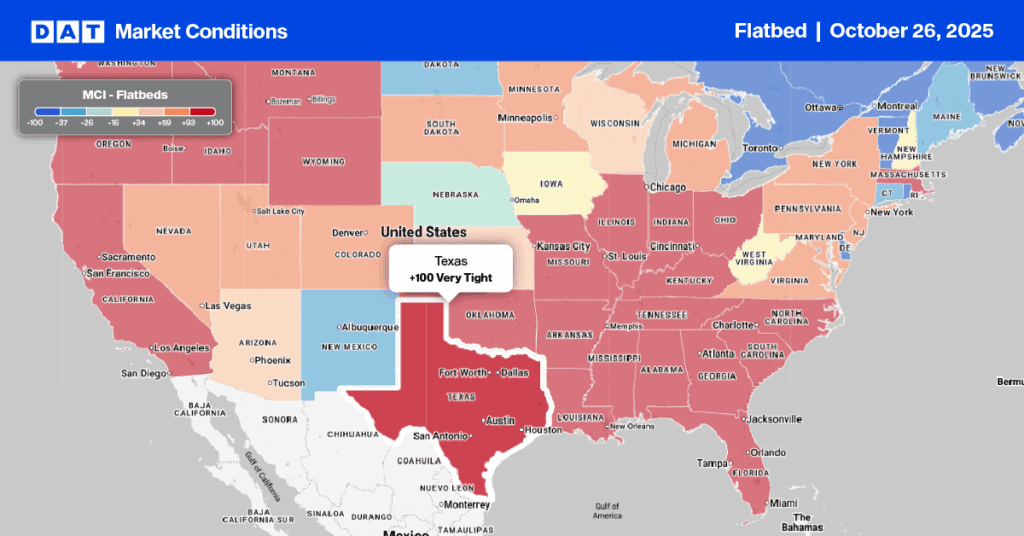The spot market rollercoaster ride is unprecedented in many ways, with 2021 already beating records set in 2020.
March is typically a slower time of the year on the freight calendar, but the exact opposite is happening. Spot market rates and volumes are at record levels, and even contract rates are the highest they’ve been in 5 years.
One thing is for sure: Seasonality is out the window as we pass the one-year anniversary of the World Health Organization declaring a global pandemic.
Even the traditional July 4 peak in spot rates has already been surpassed four months earlier this year. Of course, the Polar Vortex two weeks ago was the catalyst, resulting in an acute capacity crunch normally seen between Christmas and New Year’s, when drivers take time off.
Get the clearest, most accurate view of the truckload marketplace with data from DAT iQ.
Tune into DAT iQ Live, live on YouTube or LinkedIn, 10am ET every Tuesday.
By our estimate, capacity dropped by around 7% during the winter freeze in the eastern half of the country. In the temperature-controlled equipment sector, spot rates are already $0.20/mile higher than the prior high of $2.42/mile (excluding fuel surcharges) set in July 2018. From 2016 to 2020, reefer spot rates in mid-March averaged $1.82/mile, excluding fuel. Last week, the national average reefer rate was $2.62/mile — a difference of $0.80/mile.
Produce season starts
With Spring in the air and produce growers in Florida, California and Arizona planting their summer crops, truckload produce volumes are expected to make a big comeback this summer, as restaurants re-open and regulations relax around social gatherings. According to the USDA, even though weekly truckloads of domestic produce are down 18% year over year, volumes have been on the rise since the start of February.
As expected, imported produce volumes are up 30% year over year, with the majority of our winter produce coming from Mexico and South America. That’s why 59% of produce truckloads were imported last week compared to 41% from the domestic market. By the time July 4 rolls around, these numbers reverse. In 2020, 65% of produce truckloads were from the domestic market.
Last week’s Plant City Strawberry Festival in Florida marks the unofficial start of the produce shipping season, which typically begins in the southern tier of the country in Spring and then moves further north as temperatures rise. According to the USDA, Florida is number three on the list of top fruit producing states at 13% of annual production and number four for vegetables at 5%. Washington state is number two for both fruit and vegetables at 17% and 6% respectively, with California the number one produce state by far. In 2020, California accounted for 58% of total U.S. fruit and vegetable production.
Outbound reefer spot rates in Fresno, the largest produce market in California, have been climbing for the last four weeks. Rates are now up 11% month over month to an average of $2.63/mile, excluding fuel. Reefer loads on high volume lane to Denver in the last two weeks averaged $4.03/mile, and shipments to Dallas averaged $2.63/mile. Rates rose 37 cents on the lane to New York, while the Seattle lane climbed 86 cents to $3.82/mile.
The USDA reported a shortage of trucks last week in most California, Washington and Florida freight markets. With rates already climbing and capacity tightening, there’s only one direction reefer spot rates are most likely to head this produce season.


